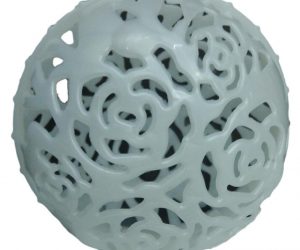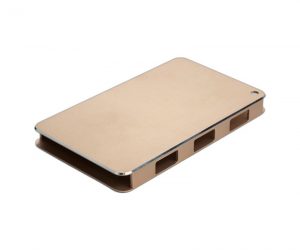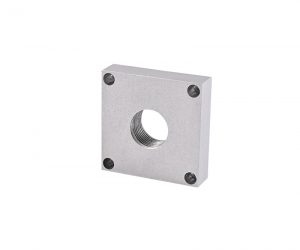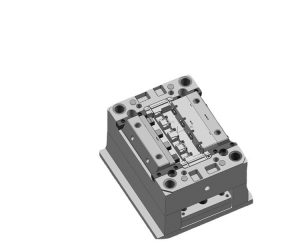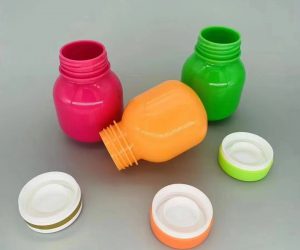Plastic mold is a combination mold used for compression molding, extrusion molding, injection molding, blow molding, and low foaming molding. Through the collaborative changes of convex molds, concave molds, and auxiliary molding systems, a series of plastic parts of different shapes and sizes can be processed.
So, what are the structures that make up plastic molds?
Firstly, the mold holder: Usually we don't need to design it ourselves, we can directly order it from a standard mold holder manufacturer, which can greatly save time on mold design. Therefore, it is called the standard mold seat of plastic molds, forming the most basic framework of plastic molds.
Next is the mold core: The mold core is the core part of the plastic mold and also the most important part in the mold. The molding part of plastic products is located in the mold core, and most of the processing is also carried out on the mold core. However, some relatively simple molds do not have a mold core, and the product is directly formed on the template. Most early plastic molds were like this, which is relatively outdated.
There are also auxiliary components: common plastic mold auxiliary components include positioning rings, injection sleeves, ejector pins, grabbing nails, support columns, top plate guide columns, guide sleeves, garbage nails, etc. Some of them are standard parts that can be ordered directly when ordering the mold seat, while others require self design.
In addition, there are auxiliary systems: plastic molds have four auxiliary systems: sprue system, ejector system, cooling system, and exhaust system. Sometimes, because the plastic material used needs to be heated at very high temperatures, some molds also have heating systems.
There are also auxiliary settings: The auxiliary settings for plastic molds include hanging eye holes, KO holes (top rod holes), etc.
Finally, there is the dead corner treatment structure: when plastic molds have dead corners, the mold will also have one or more dead corner treatment structures. For example, sliders, inclined tops, hydraulic cylinders, etc. In most books in China, this mechanism for dealing with blind spots is called the "core pulling mechanism".
Actually, plastic molds are not difficult. No matter how the plastic product changes, the mold structure used to shape the plastic product is nothing more than the above aspects. The difference between molds lies in their size, as well as the position or mode of each auxiliary component, auxiliary setting, and auxiliary system. The methods, structures, and dimensions for dealing with blind spots have changed. Of course, design experience is particularly important for making the designed molds easy to process, easy to assemble, long-lasting, reasonably priced, and producing good molded products. With good experience, we can better handle problems in design and processing, and have more confidence in handling design changes.
Plastic molds are a special tool used in the production of plastic products. Its function is to shape the raw materials into the specific shape, size, and dimensions we need. The structure of the mold is very important because it determines the quality, durability, and effectiveness of the mold. Below, I will introduce several main parts of plastic molds:
Chamber: This is the part of the mold used to form the shape of the product. When the mold is closed, there is an empty space where plastic will be injected. The number and size of cavities depend on the requirements of product design and production volume.
Core: This is a raised part in the mold used to create holes or grooves on the product. It is usually placed inside the cavity and can be used to make screw holes, slots, or other openings.
Gate: This is the channel through which plastic enters the mold cavity. It is usually located at the bottom of the mold and connected to the injection molding machine.
Runner: This channel connects the sprue and cavity, responsible for evenly distributing plastic to each cavity, ensuring that each cavity is filled with an appropriate amount of plastic.
Top pins: These are small needles used to remove finished products from the mold. They are located on the back of the mold and activated by the ejection system of the injection molding machine.
Cooling system: This is an important part of the mold structure, used to control the temperature during the injection molding process and prevent plastic deformation or warping. Cooling systems typically include waterways or other cooling mechanisms, which are integrated into mold design.
Overall, plastic molds are a complex system composed of multiple components that work together to manufacture high-quality plastic products. The cavity, core, gate, runner, ejector pin, and cooling system are all critical components that must be designed and integrated correctly to achieve optimal results. A good mold structure can help reduce waste, shorten production time, and improve the quality and consistency of finished products.
Plastic molds play a crucial role in the injection molding process. It is composed of multiple structural components that work together to form the desired plastic product shape. Understanding the structure of plastic molds is crucial for efficient mold manufacturing and the production of high-quality products.
Firstly, plastic molds typically consist of two main parts: the mold base and the mold cavity. The mold base is the supporting structure of the entire mold, usually made of sturdy materials to ensure the stability and durability of the mold. Mold cavity is the part used to form the shape of a product, usually manufactured by high-precision machining equipment to ensure the accuracy and consistency of the product.
Secondly, plastic molds also include some auxiliary structural components, such as gating systems, cooling systems, and demolding systems. The sprue system is a channel used to inject molten plastic into the mold cavity, typically consisting of a sprue, runner, and sprue plate. The cooling system is used to control the temperature of the mold, ensuring that the plastic quickly cools and solidifies in the mold. The demolding system is used to push molded plastic products out of the mold for subsequent trimming and processing.
In addition, the design of plastic molds also needs to consider some key factors, such as the size, shape, and surface finish of the mold. These factors directly affect the dimensional accuracy, appearance quality, and production efficiency of the product. Therefore, when designing plastic molds, it is necessary to fully consider these factors and work closely with relevant engineers and designers to ensure that the final product meets the requirements.
In short, plastic molds are an indispensable part of the injection molding process. Its structure is complex and delicate, requiring precise processing and debugging to achieve the expected effect. Only by deeply understanding the structural principles and design points of plastic molds can we effectively carry out mold manufacturing and produce high-quality plastic products.
What is the Structure of Plastic Mould?
The structure of a plastic mold is indeed complex and intricate, encompassing various essential components that collaborate seamlessly to enable the plastic molding process. Each component plays a crucial role in ensuring the successful formation of plastic parts with high precision and quality. Here's an expanded look at each key component:
- Mold Base: The mold base serves as the foundational structure of the mold. It provides stability and support for all other mold components. The base typically includes the A-half (cavity side) and B-half (core side), which are mounted together using precision guide pins and bushings to ensure accurate alignment during the molding process.
- Core: The core is the part of the mold that forms the inner surfaces of the plastic part. It is usually located on the B-half of the mold and can be designed with intricate shapes to create detailed features within the part. The core must be robust enough to withstand the pressure exerted by the molten plastic.
- Cavity: The cavity is the counterpart to the core and resides on the A-half of the mold. It forms the outer surfaces of the plastic part. The cavity must complement the core perfectly to ensure the final product has the desired dimensions and shape.
- Ejector System: After the plastic part solidifies and cools down, it needs to be separated from the mold without damaging its shape or surface finish. The ejector system accomplishes this task. It typically consists of ejector pins or blades that push the finished part out of the mold once it has been opened. This system ensures that the part remains intact and free from defects.
- Cooling System: Efficient cooling is vital for maintaining the productivity and quality of the plastic molding process. The cooling system involves channels or passages embedded within the mold that circulate a coolant, often water, to dissipate heat from the mold quickly. Proper cooling helps solidify the plastic part faster, reduces warping, and shortens cycle times.
- Runner System: The runner system is responsible for delivering the molten plastic from the injection unit to the mold cavity. It starts at the sprue, where the plastic enters the mold, and branches into runners that distribute the material evenly to multiple cavities, if applicable. Runners and gates are carefully designed to minimize material waste and ensure uniform filling of the mold.
These components work in harmony to transform raw plastic material into finished products with consistent quality and dimensional accuracy. Advanced design software and precise manufacturing techniques are employed to create molds that meet the stringent requirements of modern plastic manufacturing processes.
Conclusion
The way a plastic mold is built is super important in making things out of plastic. This mold has several parts: the base, core, cavity, ejector system, cooling system, and runner system. These parts need to be very precise to make sure we get a great final product. Knowing how these parts fit together is key to making good plastic items.
Plastic molds are usually made from strong materials like hardened steel or aluminum, depending on what we need for production. The base holds everything together, while the core and cavity shape the plastic item. We also have systems for ejecting the finished product, cooling it down, and guiding the melted plastic. All these parts have to work perfectly to create high-quality products.
